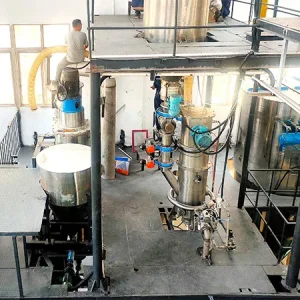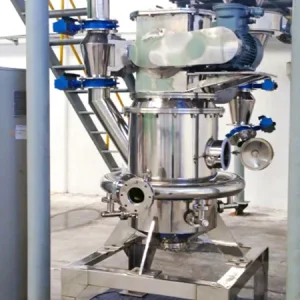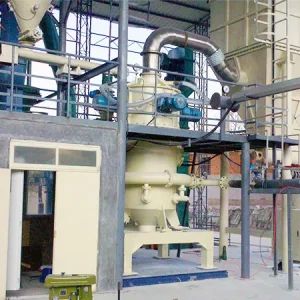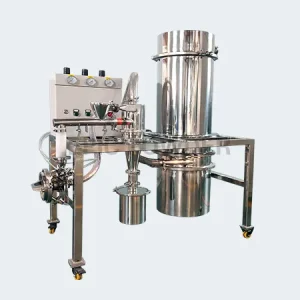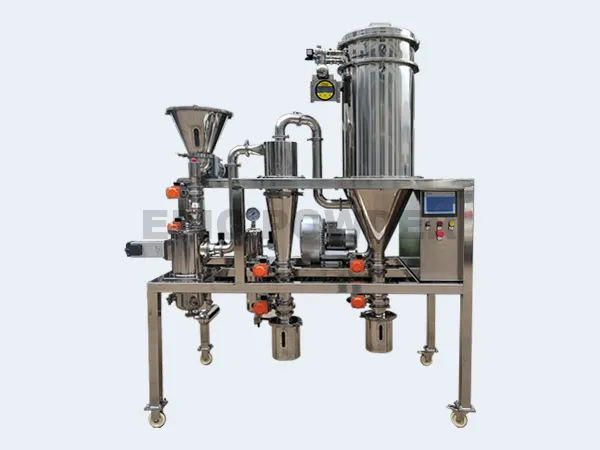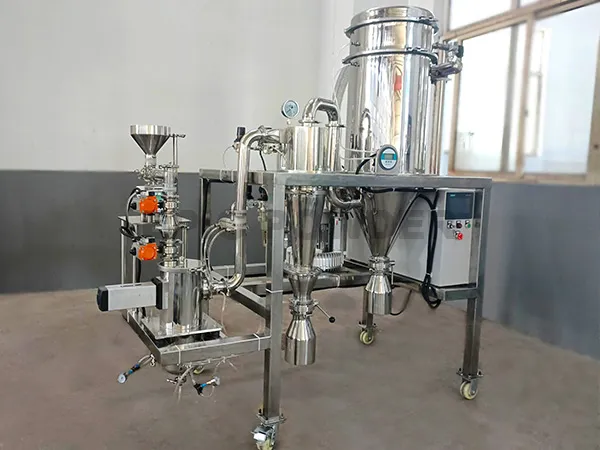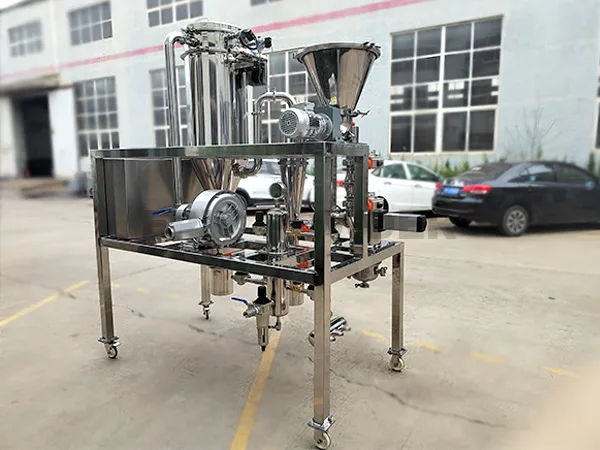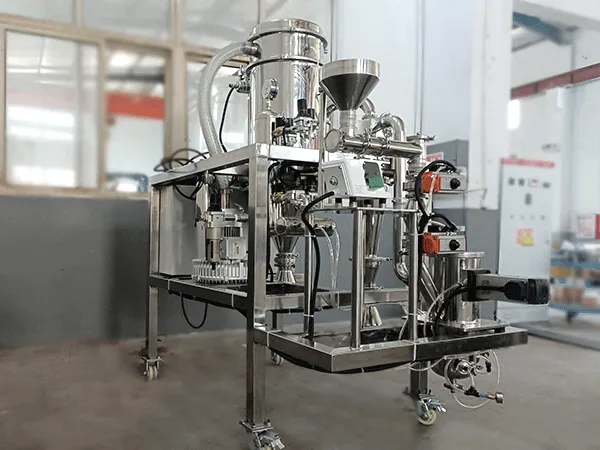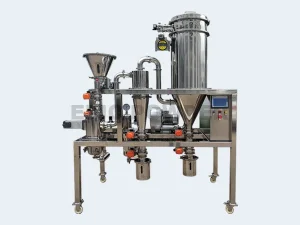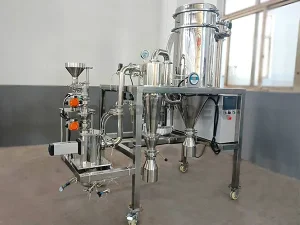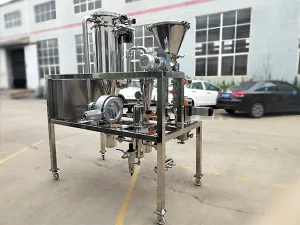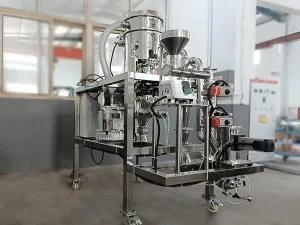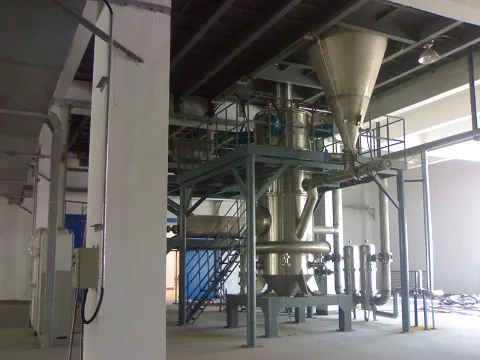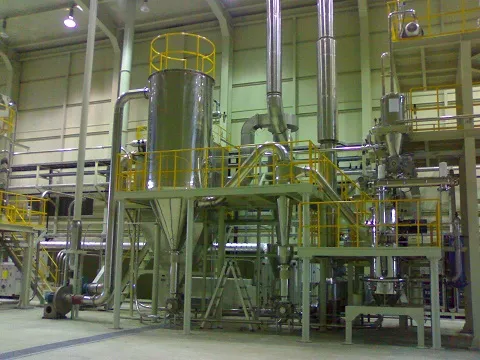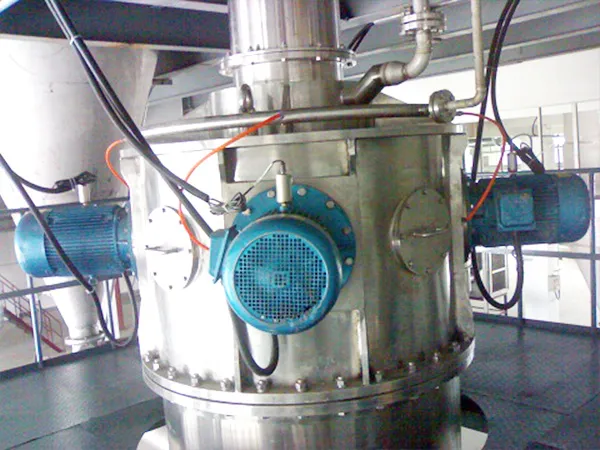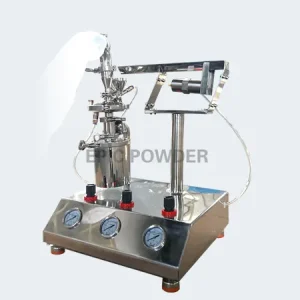Working principle of laboratory fluidized bed jet mill
After cooling, filtering, and drying, the compressed air forms a supersonic airflow through the nozzle and enters the crushing chamber. The accelerated materials meet at the intersection of the spray airflow of several nozzles, resulting in a violent collision, friction, and shear to reach the particle Finely crushed. The crushed material is transported to the impeller classification area by the rising airflow. Under the action of the centrifugal force of the classification wheel and the fan suction, the coarse and fine powder is separated. The coarse powder returns to the crushing room according to its gravity to continue crushing. The airflow enters the cyclone collector, the fine dust is collected by the bag filter, and the purified gas is discharged by the induced draft fan.
Technical advantages of laboratory fluidized bed jet mill
- The grinding process is completed by the collision of the material itself, completely self-grinding, with minimal wear on the equipment, suitable forgrinding of various hardness materials.
- The grinding form of fluidized bed collision can better maintain the shape of particles.
- Low temperature and medium-free grinding, suitable for heat-sensitive, low-melting, sugar-containing, and volatile materials.
- High-temperature and high-pressure grinding to achieve higher injection speed, lower dynamic viscosity, and highergrinding fineness and efficiency.
- Inner, classifying wheels, nozzles and other key components can be protected by wear-resistant materials such as alumina, zirconia, and silicon carbide, and organic materials to avoid contact with metal during the entire grinding process and obtain high-purity products.
- The grading wheel is installed horizontally, which can better control the fineness of products with low density and produce finer products.
- Inert gas closed-circuit cycle/explosion-proof design, which can meet the grinding of flammable, explosive, easy to oxidize, and easy to absorb moisture materials.
Laboratory fluidized bed jet mill technical parameters
| parameter/ Model | MQW03 | MQW06 | MQW010 | MQW20 | MQW30 | MQW40 | MQW60 | MQW80 | MQW120 | MQW160 | MQW240 |
|---|---|---|---|---|---|---|---|---|---|---|---|
| Feeding Size(mm) | <1 | <2 | <2 | <3 | <3 | <3 | <3 | <3 | <3 | <3 | <3 |
| Production Capacity(kg/h) | 0.3~10 | 10~150 | 20~300 | 40~600 | 100~900 | 200~1200 | 500~2000 | 800~3000 | 1500~6000 | 2000~8000 | 4000~12000 |
| Particle size(D97:μm) | 3~45 | 3~45 | 3~45 | 3~45 | 3~45 | 3~45 | 3~45 | 3~45 | 3~45 | 3~45 | 3~45 |
| Classifier motor (kw) | 2.2 | 3 | 5.5/7.5 | 7.5/11 | 11/15 | 15/7.5x3 | 7.5x3 | 11x3 | 15x3 | 15x4 | 15x6 |
| Air consumption(m³/min) | 3 | 6 | 10 | 20 | 30 | 40 | 60 | 80 | 120 | 160 | 240 |
| Air pressure(Mpa) | 0.6~1 | 0.6~1 | 0.6~1 | 0.6~1 | 0.6~1 | 0.6~1 | 0.6~1 | 0.6~1 | 0.6~1 | 0.6~1 | 0.6~1 |
